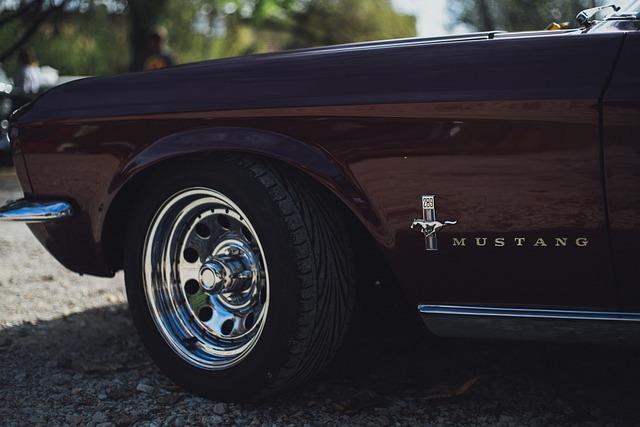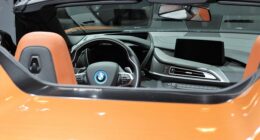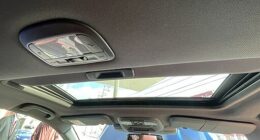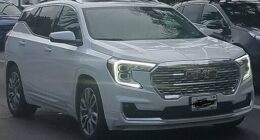Bumpers protect the front and rear of a vehicle from impact. Fenders are the panels over the wheels, shielding them from road debris.
TL;DR Bumpers Vs. Fenders
Bumpers are designed to absorb impact, protecting the car and its occupants during collisions. They distribute energy to minimize damage to crucial components. Fenders are protective panels over the wheels, shielding them from road debris, water, and maintaining the vehicle’s appearance.
Bumpers

Bumpers are designed to absorb impact and protect both the vehicle and its occupants in the event of a collision. They act as a cushioning barrier between the car’s body and any external force that may be exerted upon it.
A key feature of bumpers is their ability to distribute impact energy across a wider area, reducing the potential damage caused by accidents. This helps protect crucial components such as headlights, grille, and engine from direct impacts.
Fenders

Fenders are the protective panels located over the wheels of a vehicle. They help shield the wheels and the vehicle’s body from road debris, water, and other external elements, reducing damage and maintaining the vehicle’s appearance.
Fenders are essential for protecting the vehicle and ensuring a safe driving experience. In some regions, they are also referred to as “wings.”
Uses of a Bumper
- Collision Protection: Absorbs impact during collisions, protecting occupants and reducing damage.
- Pedestrian Safety: Reduces injuries in case of accidental contact with pedestrians.
- Vehicle Protection: Guards against minor impacts, scratches, and dents during parking.
- Aesthetic Enhancement: Adds to the vehicle’s appearance with various designs.
- Structural Support: Reinforces the vehicle’s front and rear ends.
- Mounting Point: Serves as a base for attaching accessories.
- Regulatory Compliance: Meets safety standards and crash-test requirements.
Uses of a Fender
- Protection from Road Debris: Fenders shield the vehicle from rocks, dirt, mud, and water kicked up by the tires, preventing damage to the body and components.
- Wheel and Tire Protection: Fenders guard the wheels and tires from impacts, reducing the risk of damage.
- Enhanced Aesthetics: Fenders contribute to the vehicle’s appearance, adding to its visual appeal.
- Structural Integrity: Fenders reinforce the vehicle’s body, providing structural support.
- Customization Possibilities: Some fenders can be modified to accommodate larger wheels or achieve a unique look.
Bumpers Vs. Fenders – Key differences
| Bumpers | Fenders | |
|---|---|---|
| Location | Positioned at the front and rear of the vehicle | Located on the sides of the vehicle, near the wheels |
| Purpose | Designed to absorb impact during collisions | Protect the vehicle body from road debris and mud |
| Material | Often made of plastic or composite materials | Typically made of sheet metal, like steel or aluminum |
| Function | Minimize damage to the vehicle and occupants | Shield the body from dirt, rocks, and water |
| Structure | Usually a single piece with impact-absorbing foam | Form part of the vehicle's body structure |
| Styling | Can have various designs, colors, and finishes | Blends with the overall vehicle design |
| Regulation | Subject to safety standards and regulations | Less stringent regulations, mainly cosmetic features |
Pro and Cons of a car bumper
Pros
- Collision Protection: The function of a car bumper is to absorb impact during low-speed collisions, helping to protect the vehicle’s occupants and minimizing damage to the car.
- Pedestrian Safety: Bumpers also contribute to pedestrian safety by reducing the severity of injuries in case of accidental contact with the vehicle.
- Structural Integrity: Bumpers can add structural integrity to the front and rear ends of the car, providing support to other components in the event of a collision.
- Cosmetic Enhancement: Bumpers come in various designs and styles, allowing car manufacturers to add a distinct look to their vehicles, enhancing their overall appearance.
- Parking Protection: Bumpers can prevent minor scratches and dents during parking maneuvers, protecting the car from minor accidents and abrasions.
Cons
- Limited Effectiveness in High-Speed Collisions: Bumpers are designed for low-speed impacts. In high-speed collisions, they may not provide sufficient protection, and more extensive damage to the vehicle and occupants can occur.
- Repair Costs: Modern bumpers often integrate various sensors, cameras, and advanced materials, making repairs more expensive compared to older, simpler bumper designs.
- Environmental Impact: Many bumpers are made of plastic materials, which can have significant environmental consequences, especially if not recycled properly.
- Weight and Fuel Efficiency: Some bumpers can add weight to the vehicle, potentially impacting fuel efficiency, especially if they are not made of lightweight materials.
- Reduced Ground Clearance: In certain designs, bumpers may reduce the ground clearance of the vehicle, making it more susceptible to damage when driving over obstacles.
Pro and Cons of a car fender
Pros
- Protection from Debris: Fenders shield the vehicle body from road debris, such as rocks, dirt, and water, helping to prevent damage to the car’s paint, body panels, and other components.
- Wheel Protection: Fenders cover the wheel arches, providing protection to the wheels and tires from potential impacts, reducing the risk of damage.
- Enhanced Aesthetics: Fenders are often designed to complement the overall look of the vehicle, adding to its visual appeal and contributing to its aesthetic design.
- Structural Integrity: Fenders can add structural rigidity to the vehicle’s body, reinforcing the front and rear sections and supporting other components.
- Customization Possibilities: Some car owners choose to modify their fenders, allowing for various customizations, such as widening or flaring, to accommodate larger wheels and tires or achieve a unique look.
Cons
- Vulnerable to Damage: Being located on the sides of the vehicle, fenders are more susceptible to damage from side impacts, curbs, and obstacles on the road.
- Rust and Corrosion: Fenders made of metal, such as steel or aluminum, can be prone to rust and corrosion over time, especially in regions with harsh weather conditions and road salt usage.
- Costly Repairs: Repairing or replacing damaged fenders can be expensive, especially if they require paint matching and blending to maintain the vehicle’s appearance.
- Weight: Fenders can add weight to the vehicle, potentially affecting fuel efficiency and handling, especially if they are made of heavier materials.
- Complexity in Modern Vehicles: Some modern vehicles have fenders integrated with other components, like headlight assemblies or trim pieces, making repairs more complex and costly.
Image Credits
Featured Image By – Mihai Surdu on Unsplash
Image 1 By – Georgi Petrov on Unsplash
Image 2 By – Markus Spiske from Pixabay








